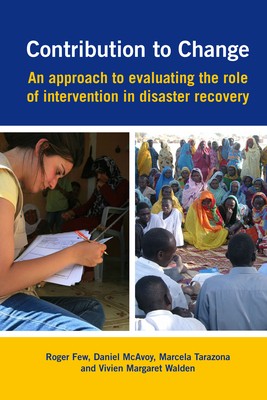
- We will send in 10–14 business days.
- Author: Roger Few
- Publisher: Practical Action Publishing
- ISBN-10: 1853398128
- ISBN-13: 9781853398124
- Format: 14.7 x 20.6 x 0.8 cm, minkšti viršeliai
- Language: English
- SAVE -10% with code: EXTRA
Reviews
Description
As the number of people affected by disasters has risen, so have the expectations placed on humanitarian agencies by donors, the public and the affected populations themselves. Agencies must now provide evidence of impact of their interventions. But applying conventional evaluation methods can pose problems. How can we assess the difference that intervention makes? Is it ethical to consign some disaster-affected communities to control groups? How feasible is it to collect baseline data among people who have just been traumatized? This guide provides a reliable and practical method for identifying the contribution an agency makes to changes to people's lives in the recovery period following disasters. It outlines 11 steps that take evaluators through designing quantitative and qualitative methods through to collecting field data and developing a narrative of evidence and change.
EXTRA 10 % discount with code: EXTRA
The promotion ends in 22d.00:52:01
The discount code is valid when purchasing from 10 €. Discounts do not stack.
- Author: Roger Few
- Publisher: Practical Action Publishing
- ISBN-10: 1853398128
- ISBN-13: 9781853398124
- Format: 14.7 x 20.6 x 0.8 cm, minkšti viršeliai
- Language: English English
As the number of people affected by disasters has risen, so have the expectations placed on humanitarian agencies by donors, the public and the affected populations themselves. Agencies must now provide evidence of impact of their interventions. But applying conventional evaluation methods can pose problems. How can we assess the difference that intervention makes? Is it ethical to consign some disaster-affected communities to control groups? How feasible is it to collect baseline data among people who have just been traumatized? This guide provides a reliable and practical method for identifying the contribution an agency makes to changes to people's lives in the recovery period following disasters. It outlines 11 steps that take evaluators through designing quantitative and qualitative methods through to collecting field data and developing a narrative of evidence and change.


Reviews